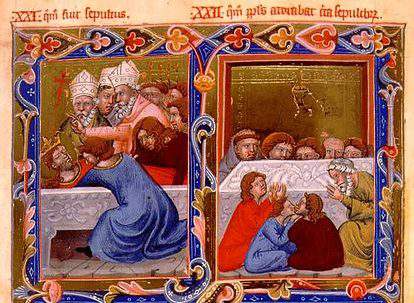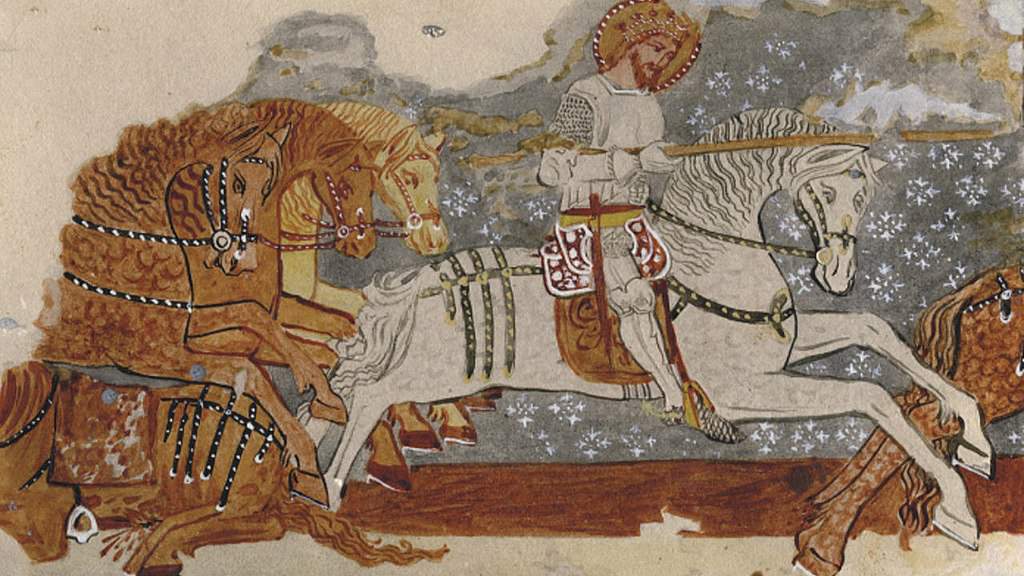Hungary’s greatest legend, king Saint Ladislaus
Saint Ladislaus (Szent László in Hungarian) is and was considered throughout Hungarian history to be the greatest ruler of the Kingdom of Hungary. He was admired for his bravery, strength and honest heart, with several legends crafted about his deeds both during his life and after his death.
Fact
After the death of Saint Stephen, the state founder, the Hungarian kingdom faced years of internal strives, and the situation only settled with the rough succession of Ladislaus I. Even though he was not the rightful heir to the throne, because the custom of primogeniture that St. Stephen wished to introduce was still not respected by Hungarian rulers to come, by all means, he was the most adept for the task. So after several clashes with his cousin, Solomon, he finally took the throne in 1077 (ruling until his death as a result of a battle wound in 1095).
In some ways, he followed in St. Stephen’s steps, by respecting and further enforcing Christianity upon Hungarians, for instance. It was St. Ladislaus who canonised the first saints in Hungarian history, and who even
initiated St. Stephen’s canonisation even though St. Stephen had his grandfather blinded.
This goes to show how well St. Ladislaus understood Stephen’s motives and respected peace above self-interest.
The chaos that ensued in Hungary because of the severe conflicts over the succession has manifested in the peaking of crime. St. Ladislaus introduced heavy punishment for those who were caught stealing or robbing, ranging from maiming, blinding, hanging, all the way to the selling of the criminal’s children as slaves. This was necessary to strengthen security in the kingdom and to restore authority.
Another aspect which St. Ladislaus found important in restoring security was to protect the borders from Steppen tribes. After several victories over enemy tribes around the Hungarian border, St. Ladislaus finally secured the kingdom: there were no attacks on the outposts up until 1241 when the Mongolian armies raided Eastern Europe and occupied Hungary.
Ladislaus was canonised in 1192.
St. Ladislaus was admired by many already during his life, thanks to the diplomatic ways in which he ruled and for his bravery along with his physical build. He was often described as “God’s athlete” for he was thought to be at least a head taller than his soldiers and quite strong even in old age. Later kings considered him as a role model, and after their coronation ceremony, they often paid their respects to him at his grave in Nagyvárad (Oradea, Romania). Up to this day, there are some who claim that he was the best ruler that Hungary has ever seen.

The Burial of Saint Ladislaus
Fiction
Dozens of mythical stories surround St. Ladislaus, and these are some of the most adventurous, popular and important ones.
- One story argues that he was crowned twice: once in 1077 with the Greek royal crown and then again in 1081 when the Hungarian crown was retrieved from his adversary, Solomon.
- Another about his crowning recalls that he was not even crowned, for he wished to be crowned with a heavenly crown only (this might suggest that he wanted to be in God’s service even as a king)
one of his soldiers claimed that he saw the king levitating while praying
- Legend claims that during a battle in Szeklerland between the Székelys and the Mongolian Golden Horde 250 years after St. Ladislaus’ death, the Székely troops prayed to him for help and not much later a tall, valiant soldier came to their aid. This is called the Patrocinium wonder. Witnesses said that the king’s corpse has disappeared from his crypt and after the battle was done, the body was found again, but now drenched in sweat, suggesting that he was out on the battlefield fighting.
The Hungarians fought a series of battles with the Cumans under the leadership of St. Ladislaus, and of course, there are mythical recollections of these events too:
- One time, when the Hungarian army was close to starvation, the king prayed to God for help, and with his aid, St. Ladislaus has sprung water from a rock with his spear just like Moses. Not much later, a horde of bison and deer appeared, which the Hungarians hunted and ate.
- When the Cumans were pursued by the Hungarians and were almost caught, the Cuman leader ordered his soldiers to scatter their money on the ground in the hopes that the Hungarian army will stop to pick up the gold. So it was, but
St. Ladislaus again turned to God for help, who then turned the gold and silver coins into stone*.
Thus, the diversion failed. (this story has a different version, involving the Pechenegs, from whom the Hungarian troops were fleeing. In this telling, the Hungarians left the coins which soon turned into stone)
- Once the Cumans almost caught the Hungarians, however, upon the king’s request for help, God split the Turda mountain into two behind the Hungarian troops, so the Cumans could not follow them. This is today known as the Turda Gorge.
*some fossils are today called St. Ladislaus’ money, which was centuries ago believed to have been actual coins once
featured image: St. Ladislaus chasing the “Cuman” warrior (in the Unitarian church of Székelyderzs in Dârjiu, Romania) by Varga Tamas – WikiCommons
Source: Daily News Hungary
please make a donation here
Hot news
What happened today in Hungary? — 25 April, 2024
Azerbaijan supplies gas to Hungary for the first time in history
Chinese President to visit Budapest: why is Xi coming to Hungary?
Breaking: Hungarian government to sue Spar
Attention: Budapest-Vienna railway line renovation continues in Hungary, timetable changes
Orbán: Make America Great Again! Make Europe Great Again!





1 Comment
[…] Szent László/Saint Ladislaus […]